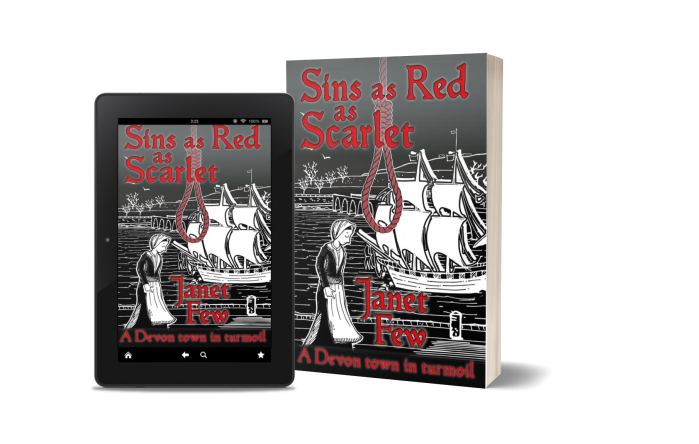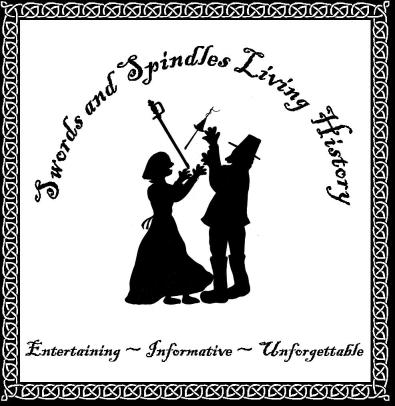I am sure ’tis all what you folk do call fake news, as who knew that Mistress Agnes was learned enough to be able to write? Rumour has it dear folk, that she has penned a tale of our time. For those who have been taught to read, it will be available from 29 August but today we are permitted to tell you of the title, Sins as Red as Scarlet and a little of the story. We can also share the beauteous cover, created by Robin Paul of The Branch Line. If that ’tis not enough, minstrel Dan Britton has composed a song to accompany Mistress Agnes’ tale. ’Tis available on what he doth call a CD; we know not what that be. Over on the Book of Face, Mistress Agnes will be reading extracts from Sins as Red as Scarlet at eleven of the clock.
It seem she is also reducing the number of groats required to acquire that wonderously useful tome Coffers, Clysters, Comfrey and Coils: the lives of our seventeenth century ancestors. Said volume includes portraits of our goodselves. If you doth click upon these words you will learn of such.

It is 1682. Across the land, the Age of Reason has begun; scientific thought is ousting superstitious belief. The menacing days of the witchfinder have all but gone. Nevertheless, in Devon’s county town, three impoverished women are approaching the gallows, condemned to death for the crime of witchcraft. They come from the prosperous port of Byddeforde. There we find the rich merchants, the flourishing tobacco warehouses and the bustle of ships setting sail for the Newfoundland cod-banks. Yet, barely hidden, are layers of intolerance and antagonism that have built up over decades. A time of plague, of war, of religious dissent; all of which have fashioned the prejudices and fears of the town’s inhabitants.
In an alternative 2020, sixteen-year-old Martha, herself a bullies’ target, undertakes a school local history project. As she immerses herself in the lives of Bideford’s seventeenth century residents, the intertwining stories of these years are told through the eyes of real people who lived at the time. Probing the motivations and beliefs of Bideford’s seventeenth century residents, Martha comes to understand how past events might lead ordinary people to become the victims, the accusers, or the accused.
